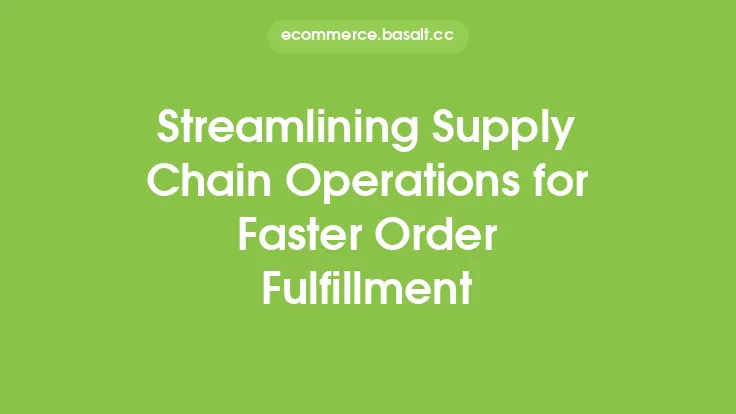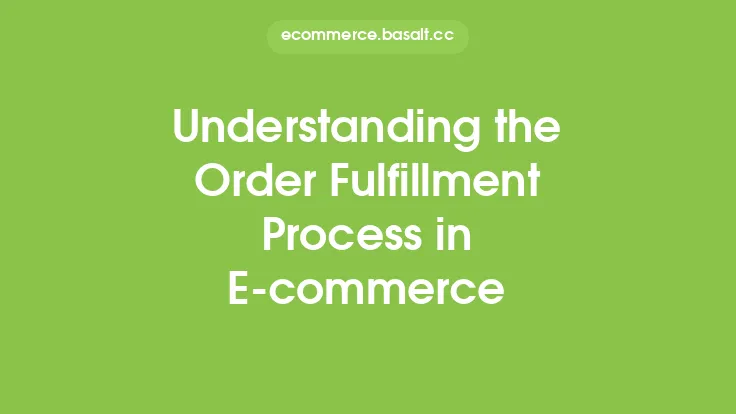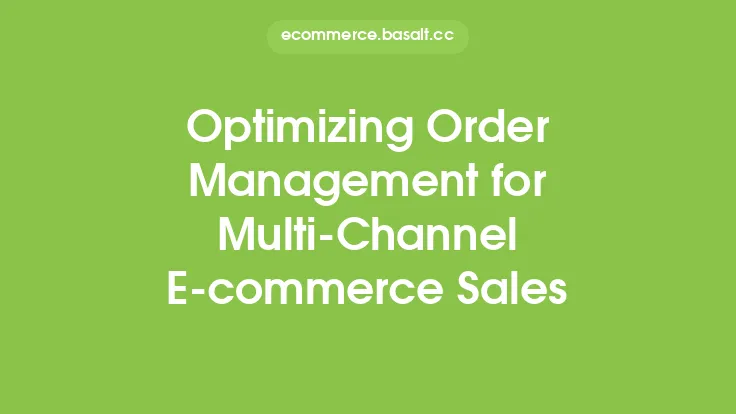In today's fast-paced e-commerce landscape, order fulfillment plays a critical role in determining the success of an online business. With the rise of same-day and next-day delivery options, customers have come to expect rapid and reliable shipping. As a result, e-commerce companies must develop and implement effective order fulfillment strategies to meet these expectations and stay competitive. At the heart of these strategies is the goal of achieving faster delivery times, which not only enhances customer satisfaction but also drives loyalty and repeat business.
Understanding the Basics of Order Fulfillment
Order fulfillment refers to the process of receiving, processing, and delivering orders to customers. It encompasses a range of activities, including inventory management, order processing, packaging, shipping, and returns handling. Effective order fulfillment is crucial for e-commerce businesses, as it directly impacts customer experience, loyalty, and ultimately, the bottom line. To achieve faster delivery times, e-commerce companies must optimize each stage of the order fulfillment process, from the moment an order is placed to the point of delivery.
Strategies for Faster Delivery Times
Several strategies can be employed to achieve faster delivery times in e-commerce order fulfillment. One key approach is to implement a distributed inventory system, where products are stored in multiple warehouses or fulfillment centers located closer to customers. This strategy, known as distributed inventory or multi-warehouse shipping, reduces shipping distances and times, enabling faster delivery to a wider geographic area. Another strategy involves leveraging technology, such as automation and artificial intelligence, to streamline order processing and packaging. Automated systems can quickly and accurately pick, pack, and ship orders, significantly reducing the time from order placement to shipment.
The Role of Shipping Carriers and Partnerships
The choice of shipping carrier and the nature of the partnership with them can also significantly impact delivery times. E-commerce businesses should select carriers that offer fast, reliable, and cost-effective shipping options. Building strong relationships with carriers can lead to preferential treatment, such as priority handling and access to specialized shipping services. Additionally, considering partnerships with local courier services or regional carriers can provide faster and more flexible delivery options, especially for same-day or next-day deliveries.
Inventory Management and Forecasting
Effective inventory management is another critical component of faster delivery times. E-commerce companies must ensure that they have the right products in stock at the right time to meet customer demand. This involves using data analytics and forecasting tools to predict demand patterns and manage inventory levels accordingly. By maintaining optimal inventory levels, businesses can reduce the likelihood of stockouts and overstocking, both of which can lead to delays in order fulfillment and negatively impact delivery times.
Technology and Automation in Order Fulfillment
Technology plays a vital role in modern order fulfillment, enabling e-commerce businesses to process orders more efficiently and deliver products faster. Automated warehouse management systems can optimize inventory storage and retrieval, while robotic pick-and-pack systems can significantly speed up the order preparation process. Furthermore, integrating e-commerce platforms with fulfillment systems through APIs or other integration methods can automate the flow of order information, reducing manual errors and accelerating the fulfillment process.
Measuring and Optimizing Performance
To ensure that order fulfillment strategies are effective in achieving faster delivery times, e-commerce businesses must regularly measure and analyze their performance. Key performance indicators (KPIs) such as order-to-ship time, shipping time, and on-time delivery rate provide valuable insights into the efficiency of the fulfillment process. By monitoring these KPIs and making data-driven decisions, companies can identify bottlenecks and areas for improvement, implementing changes to optimize their order fulfillment processes and further reduce delivery times.
Conclusion
Achieving faster delivery times is a complex challenge that requires a multifaceted approach to order fulfillment. By understanding the basics of order fulfillment, implementing strategies such as distributed inventory and technology integration, and continuously measuring and optimizing performance, e-commerce businesses can significantly improve their delivery capabilities. As customer expectations for rapid and reliable shipping continue to evolve, the development and refinement of effective order fulfillment strategies will remain a critical factor in the success of e-commerce companies.




